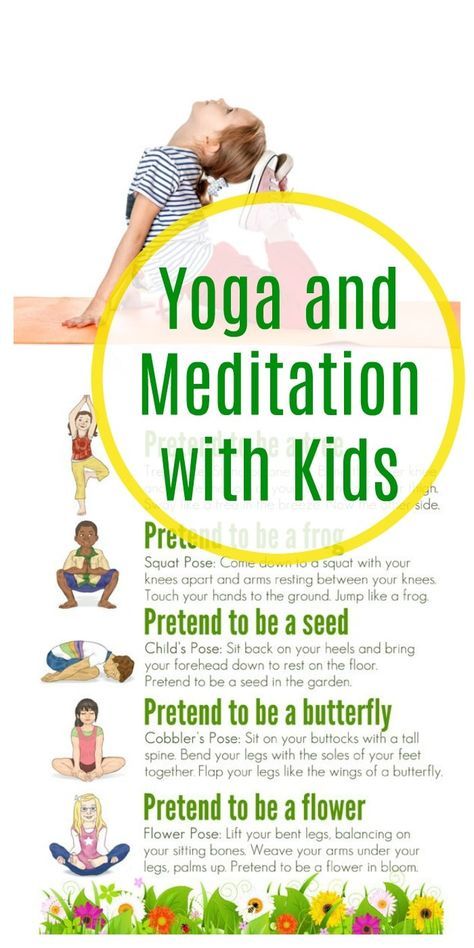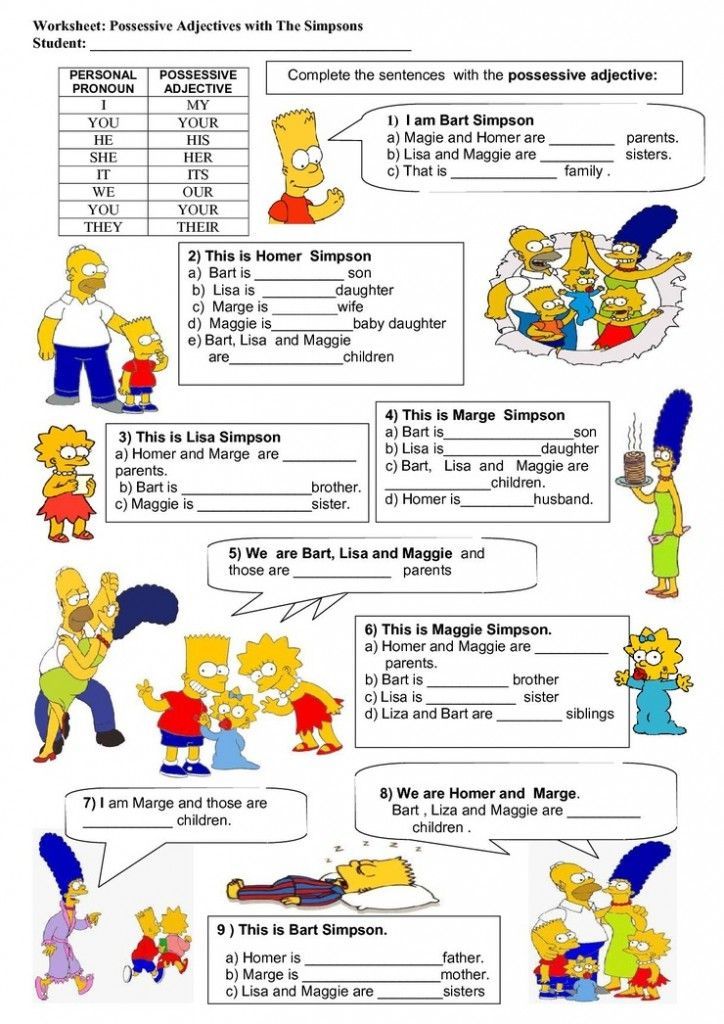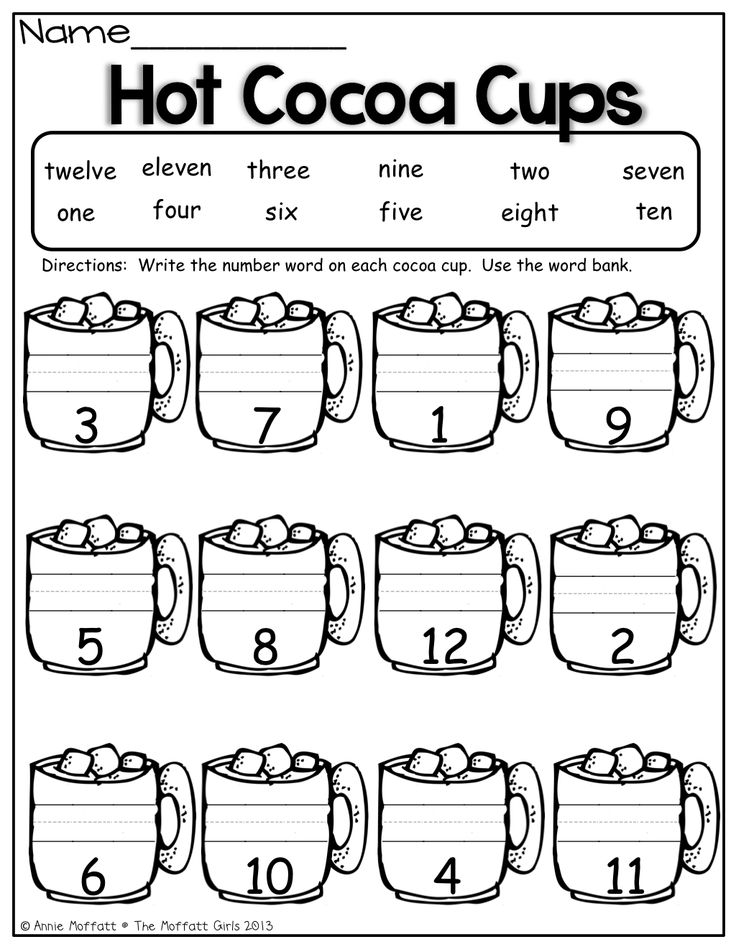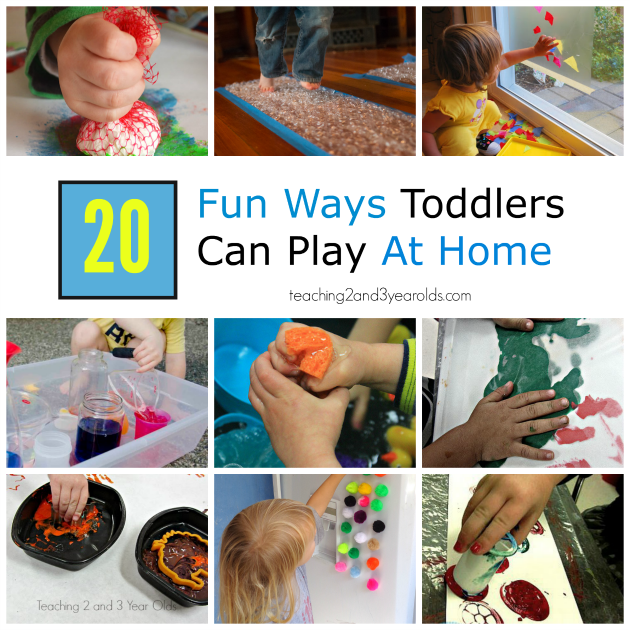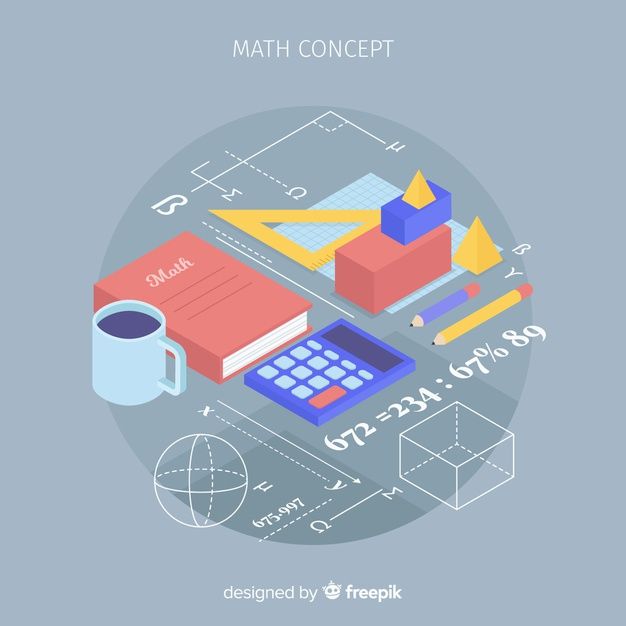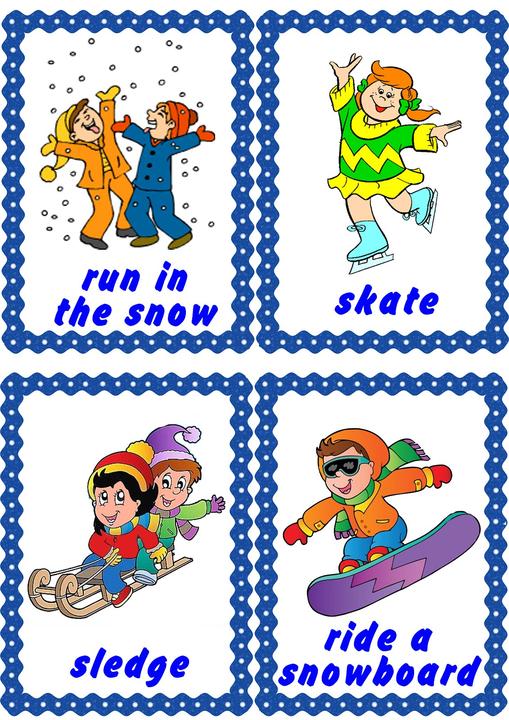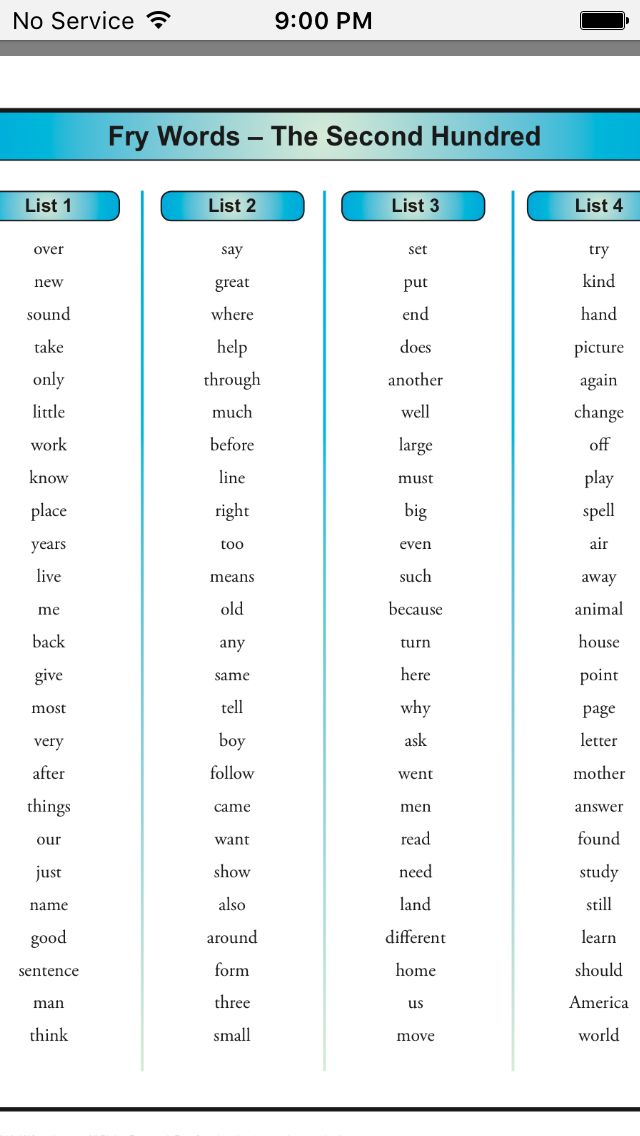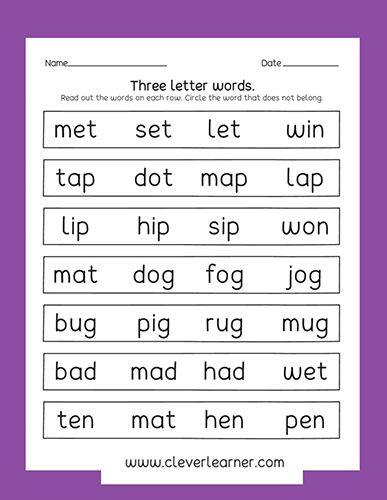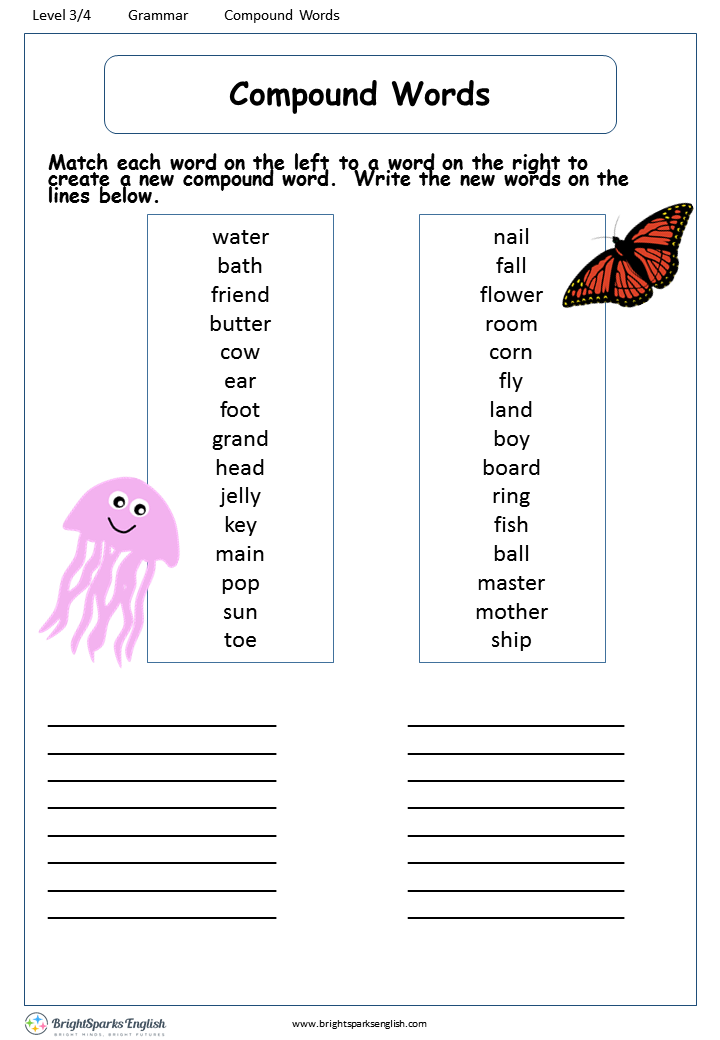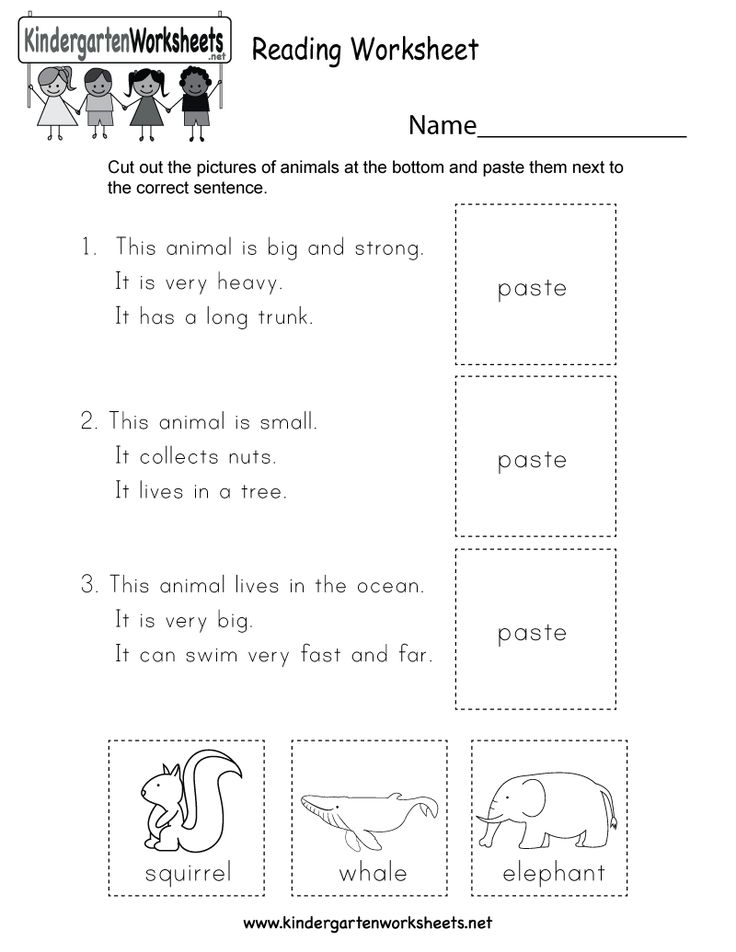Benefits of meditation for kids
Just Breathe: The Importance of Meditation Breaks for Kids
Our kids' brains are tired, and children of all ages really need opportunities where they can take time out each day "unplugged" to relax and focus. Meditation offers this break and helps kids function more effectively and clearly.
Children today also have reportedly high stress levels. To help them take a break, the American Academy of Pediatrics (AAP) encourages parents to share meditation with their children—and teachers to incorporate mindfulness training into their lesson plans.
The simple act of teaching children how to stop, focus, and just breathe could be one of the greatest gifts you give them.
Meditation Options for Children
Meditative practices have been used since ancient times to improve health and well-being. But, just as an athlete may do different exercises, people who practice meditation often use different types.
The most common types of meditation practice are concentration, mindfulness, movement based, cultivating positive emotions, and emptying. There are specific examples and ways to practice each type.
See table.
Many meditation practices use breathing techniques to promote a state of calm. Mindfulness meditation on breath, perhaps the most well-known type, involves sitting quietly, resting or closing your eyes and bringing your attention to your breath. When your attention drifts away, which it is likely to do, simply usher your attention back to your breath without judgment. You don't need years of meditative practice to benefit from this technique, nor do your children.
There's no doubt, however, that sitting still for any length of time can be difficult for some kids. For this reason, a movement-based meditation, such as yoga, may serve as a good introduction.
Research on the Benefits of Meditation in Children
Meditation is used to rest the mind, body and spirit. This, in turn, has many mental, physical, and spiritual benefits. Mindfulness meditation, specifically, is gaining a foothold in disease prevention and treatment.
A number of studies in school settings also show improved attention and behavior. Some research has shown benefits for attention deficit hyperactivity disorder (ADHD), anxiety, depression, school performance, sleep, behavior problems, and eating disorders. For example, a trial of 300 low-income, minority urban middle-schoolers using school-based mindfulness instruction led to improved psychological functioning and lower levels of posttraumatic stress disorder (PTSD) symptoms.
There are also physical benefits as it calms the nervous system and decreases stress hormones. Studies have shown benefits for gastrointestinal symptoms, obesity, headaches, high blood pressure, pain sensitivity, and immune function. For example, a trial looking at the effect of mindful breathing meditation at a summer camp of 166 teens at risk for cardiovascular disease found that breathing awareness produced a reduction in blood pressure and heart rate.
Meditation Tips
Meditation does not have a set of rules, but there are some tips that can help.
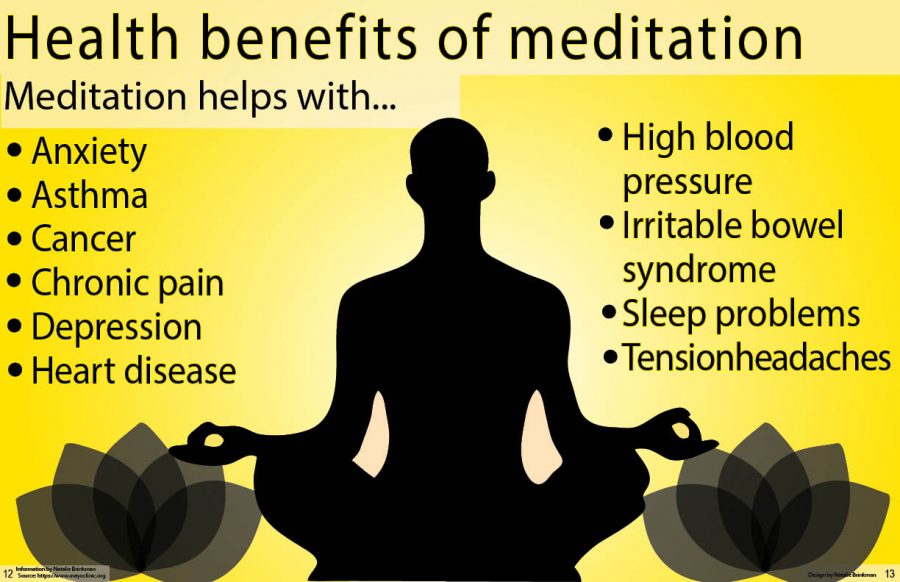
The length of time and frequency of meditating can vary for different people and different practices. But, pediatricians typically recommend the following time frames:
Preschool children: A few minutes per day.
Gradeschool children: 3-10 minutes twice a day.
Teens and adults: 5-45 minutes per day or more based on preference.
Try incorporating deep breathing into your children's daily bedtime routine—it can help them wind down for the night and make meditation easier to do when other situations arise.
Remind gradeschoolers and teens to take a few deep breaths before answering a difficult question at school, taking a test, or before an athletic performance.
As young children learn to manage strong emotions, deep breathing can be part of the process—especially before and after time outs.

While meditation can be done on your own, it can also be done with the help of a trained professional. Some counselors and individuals with training in meditation can help others learn and practice meditation.
Meditation is not currently covered by most insurance plans unless given by a licensed counselor. It is always best to check with your individual plan. Flexible medical spending programs may count meditation training as a medical expense.
There are multiple ways to learn different practices of meditation. There are books, audio recordings, videos, online training, websites, and even smartphone apps to help children meditate. Choose and practice the one that works the best for you and your child, and enjoy a calmer body, mind and spirit.
Talk to Your Pediatrician
Since meditation practices are generally safe and have many possible benefits, they can be used without much risk. As with any lifestyle change, however, it is best to discuss it with your child's pediatrician before adding meditative practices to your child's wellness routine.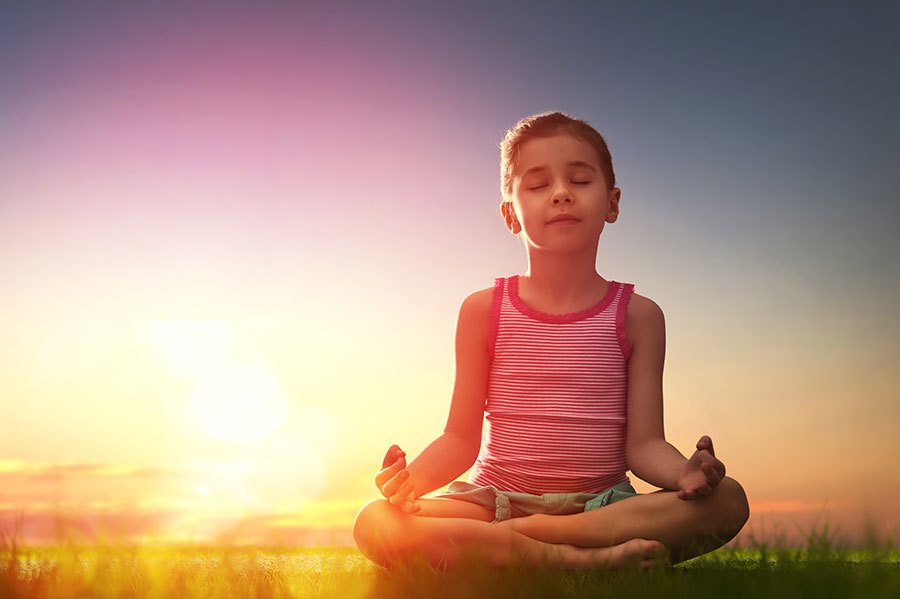
Additional Information & Resources:
Helping Children Handle Stress
For Teens: A Personal Guide for Managing Stress
For Teens: Creating Your Personal Stress-Management Plan
Childhood Depression: What Parents Can Do to Help
Recognizing & Managing Stress in Children (Video)
Mind-Body Therapies in Children and Youth (AAP Clinical Report)
The information contained on this Web site should not be used as a substitute for the medical care and advice of your pediatrician.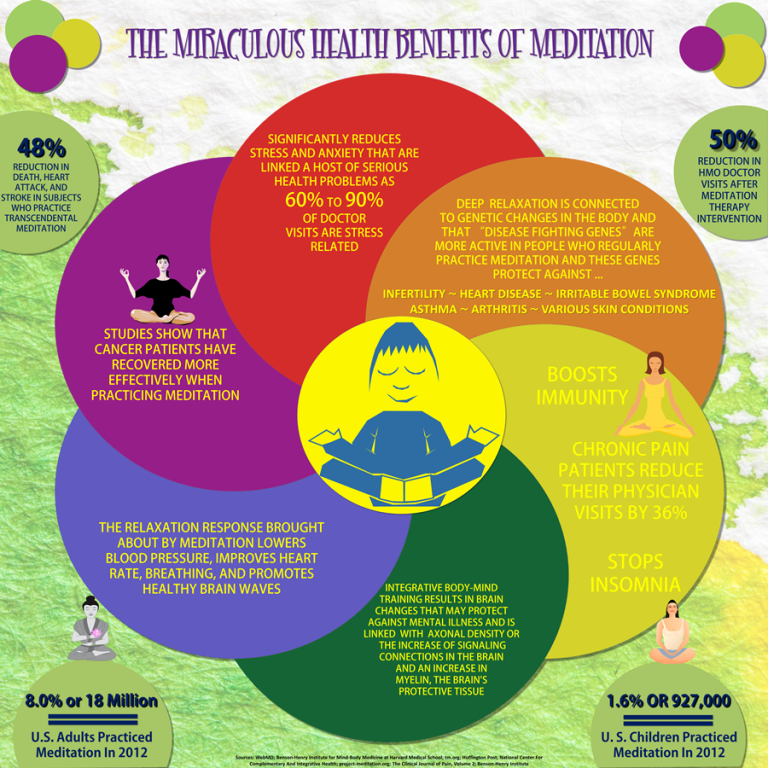 There may be variations in treatment that your pediatrician may recommend based on individual facts and circumstances.
There may be variations in treatment that your pediatrician may recommend based on individual facts and circumstances.
Benefits, Basics, And Expert Tips
You’ve likely heard of meditation for adults, and maybe you’ve even learned about the many benefits it offers, but have you ever considered meditation for kids?
While the thought of getting your child to sit calmly for long enough to reap the rewards of meditation might feel overwhelming, it doesn’t have to be.
We at HOMER have compiled our favorite tips and tricks to start building a simple meditation routine with your child. Take a look below to get started today!
What Is Meditation?
At its core, meditation is a practice of mindfulness and self-awareness, and meditation for kids is no different. By practicing meditation regularly, we can teach our minds to observe stressful thoughts without judgment and learn to relax when we need to most.
Particularly in today’s society with the constant barrage of information and technology coming at us all day long, we allow ourselves very little downtime to breathe, relax, and simply be with our thoughts.
How exhausting!
Meditation helps us switch off distractions — whether that’s something stressful externally, like a thunderstorm, or busy thoughts racing through our minds — and stay focused on the present moment.
Who Can Benefit From Meditation?
Anyone can learn to meditate, even kids! Children as young as two years old can benefit from meditation and the peace of mind it brings.
By incorporating meditation for kids into their daily routine, your child will have the opportunity to tap into this valuable skill at a moment’s notice to help them find peace and quiet whenever they need it.
The Benefits Of Meditation For Kids
For many of us, meditation is something we started as adults after hearing about or reading up on its benefits. But imagine if we had been introduced to it when we were much younger.
Could we have navigated those emotionally challenging teenage years better? Would we have managed to deal with exam stress more effectively? How about speaking to our parents, siblings, and friends with more kindness?
The answer is a big YES to all of these questions. Multiple studies have shown the great benefits of meditation in kids’ lives.
Multiple studies have shown the great benefits of meditation in kids’ lives.
One study showed the effectiveness of mindfulness meditation in adolescence; another one revealed how meditation helped students perform better academically; and this study focused on the link between emotional intelligence and meditation in teens.
This is just some of the resounding evidence that speaks to one fact: Meditation can be incredibly beneficial in many aspects of children’s lives.
Here are other notable ways meditation can help your child:
- Improved sleep
- Increased focus and prolonged attention span
- Reduced stress and anxiety
- Stronger mental resilience
- Improved emotional regulation
- Increased self-awareness and empathy
In addition to the above benefits, studies have shown that meditation can help children by improving their working memory capacity.
In a nutshell, this is the cognitive ability to selectively maintain and manipulate said information without getting easily distracted over short periods of time. This can result in improved academic performance, including mathematical and literacy skills.
This can result in improved academic performance, including mathematical and literacy skills.
Now, you may be sold on all of these incredible advantages, but you just have one question: Can every child meditate?
As a parent, it can be challenging to imagine your child sitting still and focusing on a guided meditation. You’ve witnessed their limited attention span and know how easily they get frustrated. Surely this is for some supernatural kids and not yours.
You’ll be pleased to know that children can actually be great at meditation! We sometimes forget how willing and receptive kids are to new experiences. Their curious minds tend to embrace new things.
So, while it’s normal to be a little anxious about introducing meditation to your child, the incredible benefits are worth it.
The Basics Of Meditation For Kids
Now that we’ve covered the benefits of meditation for kids, let’s dive into exactly how to get started!
Comfort
You may want to start your meditation session by doing a 30-second dance party, stretching, or jogging on the spot — anything to get those wiggles out and help your child get ready to sit quietly and have some focus time.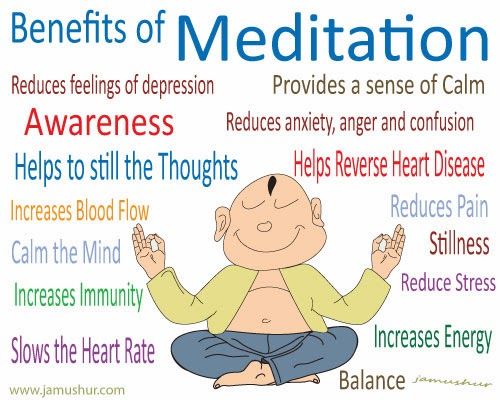
Once you’re both ready, it’s time to get comfortable and begin preparing to meditate. Despite what comes to mind when you picture meditation, you don’t always have to sit cross-legged with your hands on your knees!
Meditation practice should begin with your child sitting or lying in a comfortable position — whatever feels best.
If sitting with your legs crossed is most comfortable, start with that position. If your child feels most comfortable lying flat on their back, that’s fine, too!
Focus With Breathing
Focusing on the sensations we feel in our bodies is a great way to begin practicing mindfulness and meditation, particularly for younger children who may have difficulty concentrating for long periods.
Start by focusing on simply breathing in and out. Have your child place one hand on their belly and the other hand on their chest. Have them notice how their chest and belly rise when they inhale and fall during exhale.
You can count out loud while doing this breathing exercise.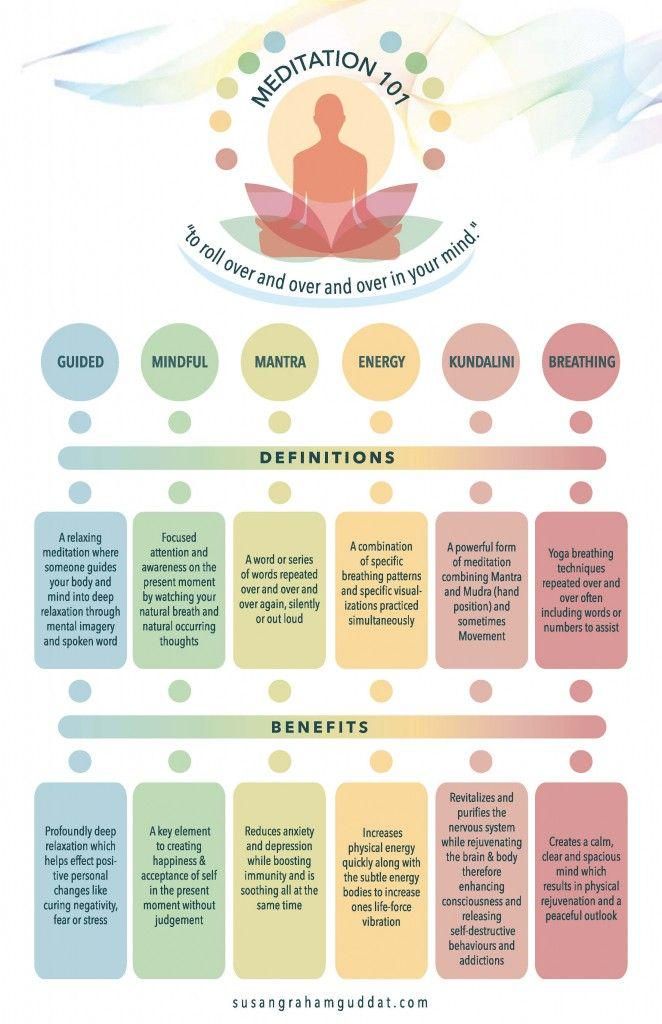 Try breathing in for the count of four, holding for two counts, and breathing out for the count of six.
Try breathing in for the count of four, holding for two counts, and breathing out for the count of six.
Your child may find it relaxing to close their eyes during this exercise, or they may prefer to have their eyes open.
After five total counts of breathing, ask your child how they’re feeling. They might feel happy, calm, relaxed, or they may even feel restless or grumpy.
Identifying these emotions along with their bodily sensations is the first step of mindfulness — all emotions are OK! If your child becomes overwhelmed or too restless to continue, tell them you’ll try again tomorrow.
It’s important to let your child take the lead when you’re starting out with meditation for kids. Pushing them too hard too quickly may make them want to avoid it altogether.
Story
Once you feel that your child has grasped the basics of slow, mindful breathing, you can begin to incorporate storytelling into your meditation practice.
This meditation technique is especially helpful to use as part of your child’s bedtime routine so they can relax before sleep.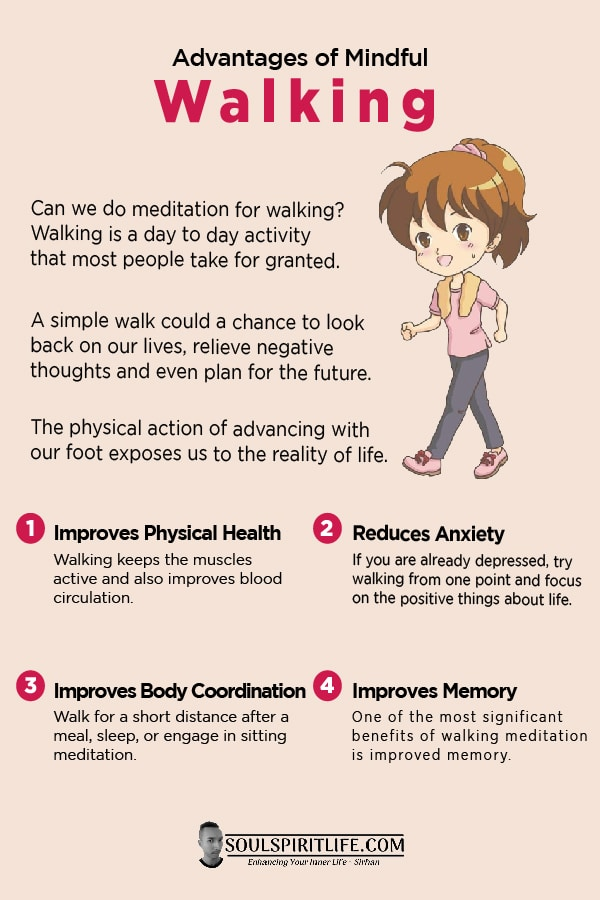
After finding a comfortable position, have your child close their eyes and bring all of their attention to their breath. They might even like to have their hand on their belly to feel the rise and fall as they inhale and exhale, just as with our simple breathing exercise.
Begin telling your child a story that will allow them to focus on how their body is feeling, bringing their attention to how comfortable the bed feels on their back or how soft their blanket feels on their skin.
The story can incorporate their favorite toys, people, or places and should be relaxing while allowing them to use their imagination and visualize what you’re describing.
For example, you could say something like, “You’re lying on your bed; what do you feel? Do you feel the smooth sheets? Your soft blanket? Your stuffed elephant is whispering goodnight to you in the sweetest voice. Can you hear her?”
Body Scanning
Body scanning and progressive muscle relaxation are simple techniques that allow you to help your child get in touch with their body.
Start by lying down flat on your back with your eyes closed and having your child do the same right next to you.
Beginning with the top of your head, ask your child to notice if they feel any tightness or squeezing feelings in their scalp. Have them picture any tightness melting away like ice cream until their head is completely relaxed.
Move down, muscle by muscle — the nose, the mouth, the neck, the shoulders — until they’ve relaxed all their muscles down to each of their 10 toes one-by-one.
You may even want to ask your child to squeeze each muscle as you progress through their body. This helps them feel the difference between a tight muscle and a calm, relaxed muscle.
Expert Tips For Child Meditation
1) Meet Your Child Wherever They Are
When it comes to meditation for kids, you might be tempted to set goals together and work toward meditating for a particular amount of time. This is great! Just remember not to set those goals too high.
When you’re first starting out with meditation, it’s best to start small and work your way up to longer periods of meditation as your child feels more comfortable with sitting still and focusing.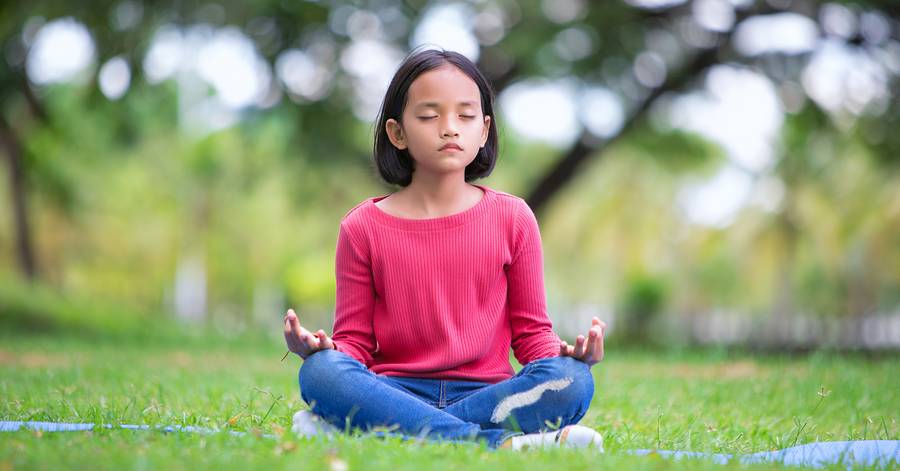
Try just 30 seconds to start, then increase until you and your child are able to practice meditation together for a full minute.
As you and your child gradually begin to look forward to your meditation practice, you can increase up to 10 minutes for each session.
Meeting your child wherever they are in terms of their ability to focus is key to building a meditation practice that you both enjoy. It will also help them create solid mindfulness habits that they can incorporate into their everyday life.
2) Maintain Consistency
As with anything you want to become great at, consistency is key! Try to keep the time of day (morning or evening), the place (a dedicated chair or rug, for example), and even your child’s clothing (anything comfortable) consistent.
This helps your child to associate the time, place, and outfit with relaxation and helps their brain switch into mindfulness mode.
3) Keep Practicing
If at first you don’t succeed, try, try again! Meditation is called a practice for a reason — it takes a lot of repetition to become masterful.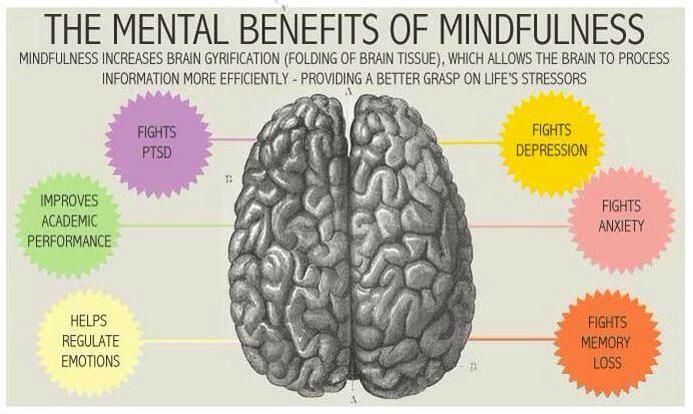
It can be overwhelming (even for adults!) to take time out of your day or evening and simply be still, so don’t be too hard on yourself or your child if it takes a while to warm up to the art of meditation.
Allow time for yourself and your child to get comfortable sitting with your thoughts, your breathing, and your bodies.
Stick with it long enough to see the benefits meditation offers and you’ll find it easier to complete your sessions.
Meditation Techniques By Age
It’s important to consider your child’s age when starting their meditation journey. For example, it’s more realistic to have a 10-year-old sit quietly for 10 minutes as opposed to a 3-year-old.
Here’s a closer look at how you can introduce meditation and mindfulness to your child in a way that’s most relevant to their age.
For Toddlers (1-3 Years Old)
At this early age, meditation is focused on mindful movement. To get started, speak to your child about things that make them feel happy. This can be butterflies, mommy, daddy, ice cream, a superhero, and everything else in-between.
This can be butterflies, mommy, daddy, ice cream, a superhero, and everything else in-between.
After focusing on the good feelings, it’s time to address the opposite. Ask your child to think of anything that makes them unhappy and where they feel that unhappiness on their bodies.
Then, to help relieve those negative feelings, encourage your child to take slow, deep breaths. This simple method helps train the brain to immediately recognize stress signals and know how to respond so that the body returns to balance.
A child who learns this from an early age may be able to practice self-care even when you’re not around.
For Preschoolers (3-5 Years Old)
For preschoolers, meditation can involve elements of a story. A great starting position is to have them lying down, relaxed.
This is a great age to begin incorporating the story element of meditation that we discussed above. Consider narrating a story to your child that gently encourages them to consider how each of their body parts feels.
For Kindergarteners And Older (5 Years +)
There are multiple ways to make meditation inviting for school-aged children. Music is one of the most effective methods.
Traditional meditation involves Tibetan singing bowls. These bowls work well because they vibrate at frequencies that help restore parts of the body that are out of balance.
While this may sound great, most of us don’t have Tibetan singing bowls lying around the house. So, another option for incorporating music is to play nature sounds for your child. This can also bring them some calm.
FAQs About Meditation
1) How Often Should My Child Meditate?
The best approach for incorporating meditation into your child’s routine is to commit to the practice frequently. Even if it’s just 30 seconds every day to start with, this half-minute will soon turn to five minutes, 10 minutes, and possibly even more the older they get.
While on this journey, meditating every day may not be easy. Some days your child will be more than willing to participate. Other days, not so much.
Some days your child will be more than willing to participate. Other days, not so much.
The key is to remain patient and consistent as you help guide them. Considering all the benefits mentioned above, it will be worth this time and effort.
2) How Soon Will The Benefits Appear?
If you’re a goal-oriented person, this question may be the most important to you. When exactly will you start seeing the benefits of meditation in your child’s everyday life?
You want to make sure you’re on the right track. We get it. But one of the best things about meditation is that you can’t actually do it wrong.
The most important thing is to start. As soon as you sit down with your child to meditate, you’re already halfway there.
And when you’re looking for the results, it’s probably not going to look like fireworks or flashing lights above your child’s head. Instead, it may be seen in much subtler ways. For example, your child may start sleeping better after struggling for a while.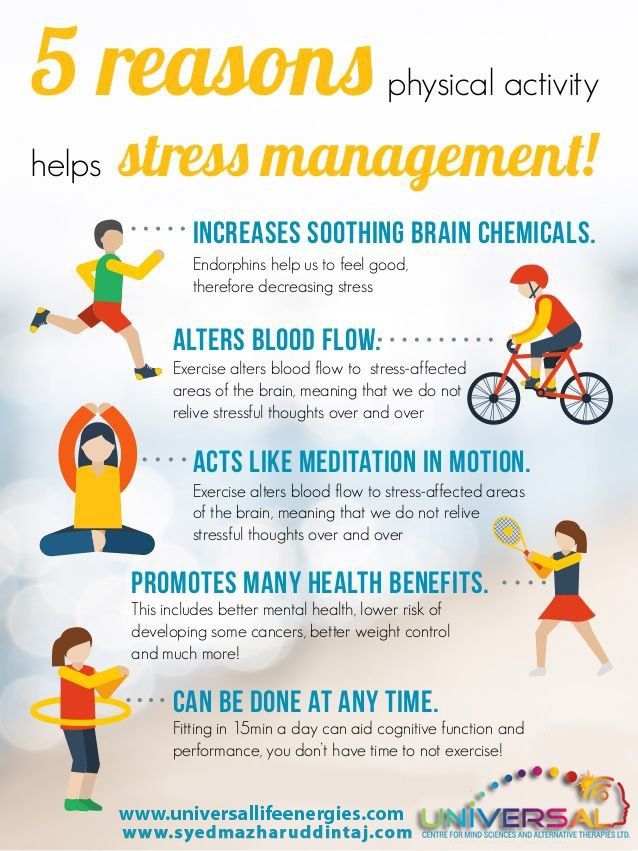
Instead of focusing on the results, just trust in the process, and the rest will take care of itself.
3) Are There Books That Can Help Me?
Here at HOMER, we love a good book. So, of course, we went searching for some of the best books on kids’ meditation out there.
The books below cover meditation and mindfulness activities and games that you can use at home.
- Meditation for Kids: 40 Activities to Manage Emotions, Ease Anxiety, and Stay Focused (For 4-8-Year-Olds)
- Bedtime Meditations for Kids: Quick, Calming Exercises to Help Kids Get to Sleep (For 4-8-Year-Olds)
- Breathe Like a Bear: 30 Mindful Moments for Kids to Feel Calm and Focused Anytime, Anywhere (For 4-8-Year-Olds)
- Mindful Games For Kids: 50 Fun Activities to Stay Present, Improve Concentration, and Understand Emotions (For 4-8-Year-Olds)
4) Are Some Meditation Styles Better Than Others?
Different types of meditation can be the most beneficial for children.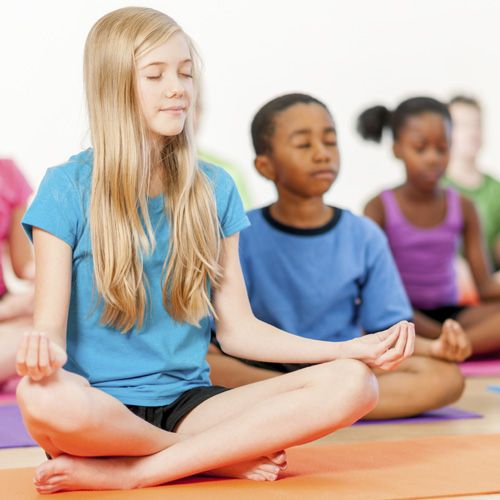 Below are some of the most common.
Below are some of the most common.
Mantra Meditation
As the name suggests, this is where a syllable, word, or phrase is repeated during the meditation session. This mantra can be spoken, whispered, chanted, or repeated in the mind. Om is one of the most common mantras people use.
Using a mantra can help your child focus on the word or phrase alone. It encourages them to avoid any distractions, including memories, sensations, and thoughts.
Mindfulness Meditation
Mindfulness has been increasingly popular over the past few years. And with its popularity, unfortunately, there have been many misconceptions about what it means.
Many people view it as a way to clear their minds and reach a calm or relaxed state. While these can be some of the benefits, that isn’t what mindfulness is.
In a nutshell, mindfulness is about being present. It’s about being aware of your thoughts and feelings, what you’re hearing and seeing, and everything else around you.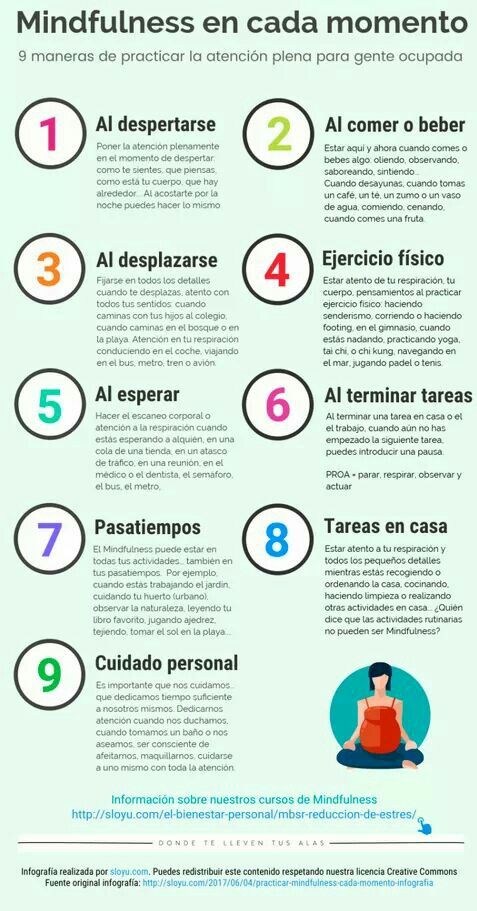 Our minds can often be distracted by both internal and external stimuli. Mindfulness helps you focus on the present.
Our minds can often be distracted by both internal and external stimuli. Mindfulness helps you focus on the present.
Some of the most effective mindfulness meditation techniques for children (and adults) are breathing techniques.
By encouraging your child to focus on their breath, they may observe their thoughts, feelings, and the sensations around them. This allows them to be more in tune with their body and mind.
Guided Meditation
This style of meditation involves listening to a practitioner in person or through an audio recording. It can include music, words, or both.
Guided meditations can have specific focuses. For example, some may focus on improving sleep or calming the mind.
After looking at these different meditation styles, you may wonder which is best for your child. While people may prefer one style over another, the reality is that there is no “best” way to practice meditation. There is also no single technique that works for every child.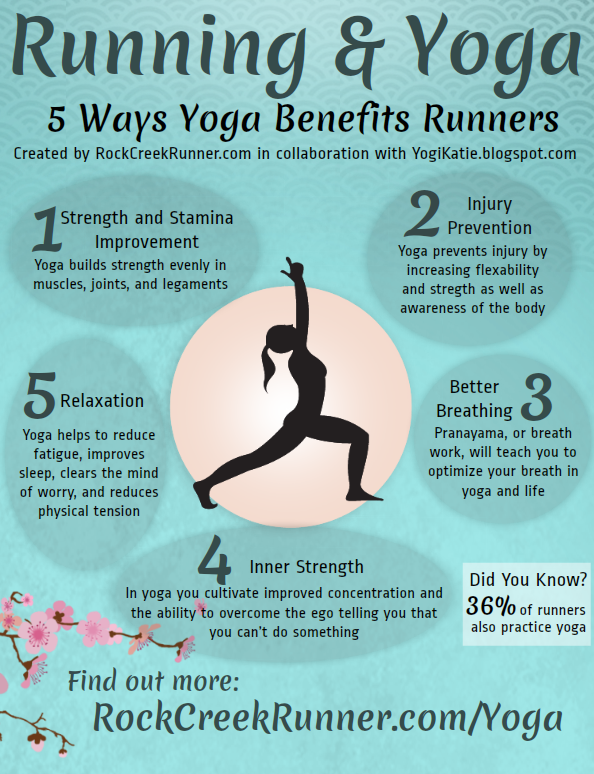
The best way to approach meditation for kids is to try out the different styles with your child to see which one is the most effective. Once you’ve found a technique that your child responds well to, work on making it a regular practice.
Enhance Your Meditation Journey With HOMER
By incorporating meditation for kids into your child’s daily routine, you’re helping them learn to use it as a tool to combat stress and refocus whenever they need to!
With consistency and practice, your child will be looking forward to their daily meditation in no time.
Combine your child’s meditation practice with the HOMER Learn and Grow app to watch them build essential skills for school and life! In addition to reading, math, and thinking skills, this app can help facilitate their social and emotional learning, providing opportunities for your child to identify emotions.
Author
Meditation for children: 3 exercises for every day
Listen to your body For parents
Teaching children meditation techniques increases mindfulness, develops self-control and empathy.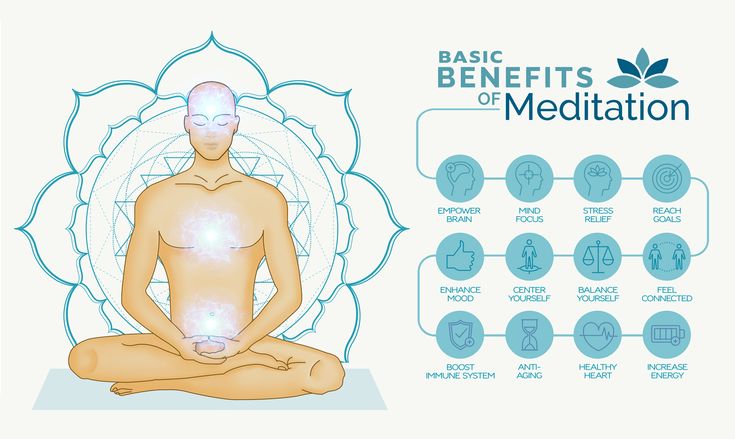 Meditation helps with stress, hyperactivity and depression in schoolchildren and improves academic performance in the sciences.
Meditation helps with stress, hyperactivity and depression in schoolchildren and improves academic performance in the sciences.
It is generally accepted that meditation requires special adult self-discipline and concentration. In fact, this technique can be used at any age. The main thing is to choose the right exercises. Three ways to get started with kids.
1. Balloon
This is a simple deep breathing exercise with a strong visual component. Performed sitting or standing.
Exercise
- Relax and inhale and exhale deeply through your nose.
- Take a slow, deep breath and try to fill your belly with air, as if you were trying to inflate a big balloon. Try to inflate your belly as much as you can.
- Slowly release the air from the balloon, exhaling through the nose.
Remind the child to relax the whole body with each exhalation, each time the air slowly leaves the balloon. At the same time, try to make a quiet “shhhh” so that the exhalation is slow. Continue for a few minutes.
Continue for a few minutes.
For restless preschoolers, a more dynamic version with your participation is suitable.
Exercise
- Close your eyes and imagine your favorite color and then a huge ball of that color in your mind.
- Inhale slowly and deeply through your nose, inflating a large ball of your favorite color with your belly. Spread your arms out to the sides and above your head, imagining how this ball grows inside the abdomen.
- When the balloon is full of air, hold your breath.
- Now I will burst your balloon (press your finger to the child's stomach), and you exhale sharply and fall to the floor.
2. "Follow the Leader"
More suitable for children over five years old. Ask your child to introduce a friend, sibling, or someone they enjoy spending time with. Then ask which of them is the leader and comes up with games. If your child sees himself as a leader, ask him to imagine that he is "breath".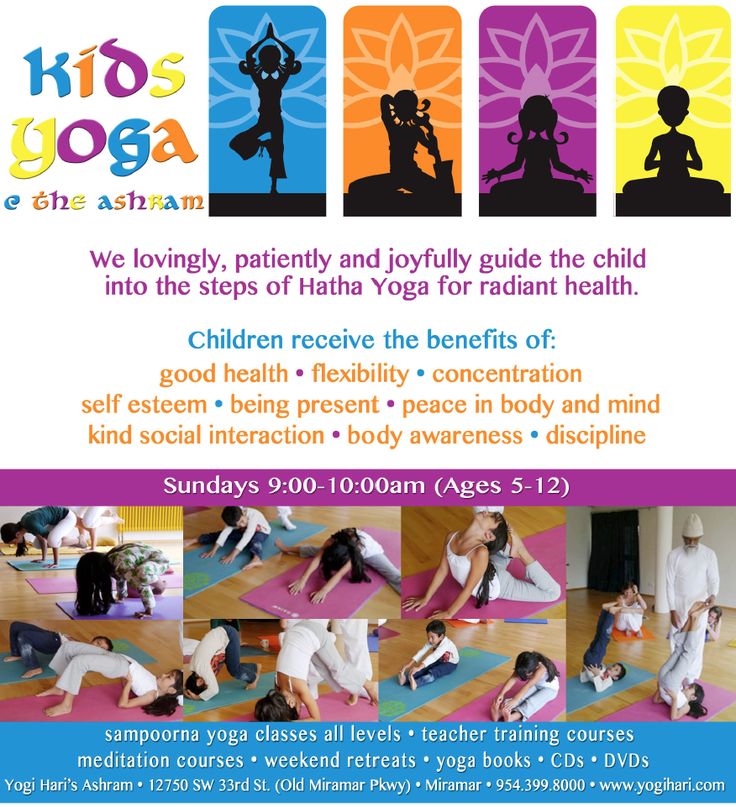 If he prefers to follow the leader, he is a "thought". For example, he chose his older brother as his best friend, and then the older brother is the leader.
If he prefers to follow the leader, he is a "thought". For example, he chose his older brother as his best friend, and then the older brother is the leader.
Exercise
- Sit back and close your eyes.
- Concentrate on your breathing and try to breathe more slowly, taking deep breaths and slow exhalations.
- Let your thoughts follow your breath. Imagine that you are a thought, and your breath is your big brother.
- Count how many seconds your exhalation lasts. Don't let your thoughts run ahead. She will try to do this, but try to make her follow the breath.
- Before exhaling, slowly count to ten.
3. Universal relaxation technique
This practice is suitable for both children and adults. She solves problems with sleep, a long period of stress or illness, liberates before public speaking. It is based on a progressive muscle relaxation technique developed by psychotherapist Edmund Jacobson in the 1920s for anxious patients.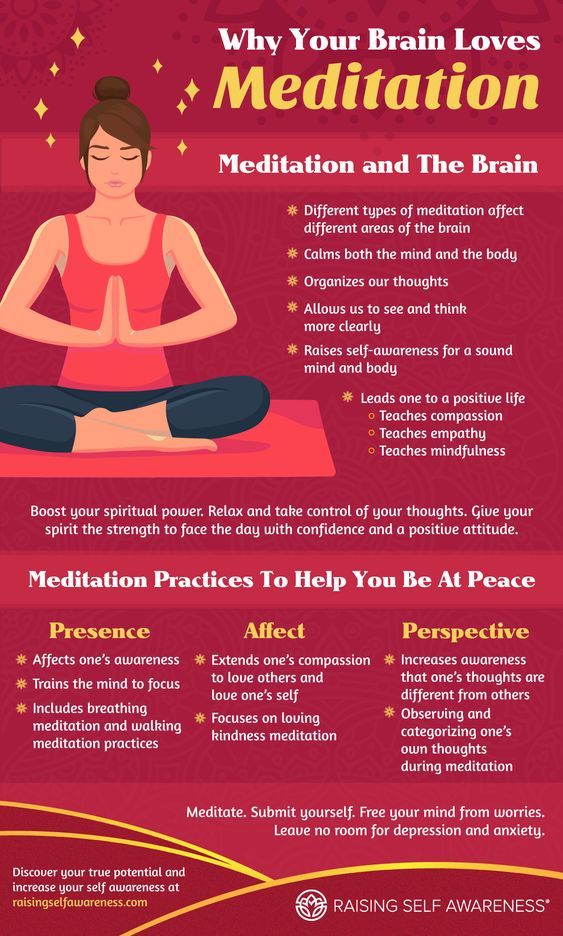
Exercise
- Get into a comfortable sitting or lying position and close your eyes. You can lie down on a pillow and cover yourself with a blanket.
- Take a few deep breaths in and out.
- Direct your attention to the right foot. Squeeze it very, very hard, tucking all five fingers inward. Hold it in this position for two deep breaths.
- Sharply relax your foot and feel how the tension dissolves. You may feel a slight tingling in your muscles.
- Shift your attention to the left foot (the “tension-relaxation” cycle is repeated).
- Slowly move along the whole body, continuing to squeeze and unclench the muscles (if this is difficult, you can squeeze or massage them with your hand) and breathe deeply. Here is an approximate sequence: right foot - left foot; right shin - left shin; right knee - left knee; right thigh - left thigh; feet and legs along the entire length; hips; buttocks; stomach; the whole body below the belt; rib cage; right hand - left hand; right palm - left palm; shoulders; neck; face.
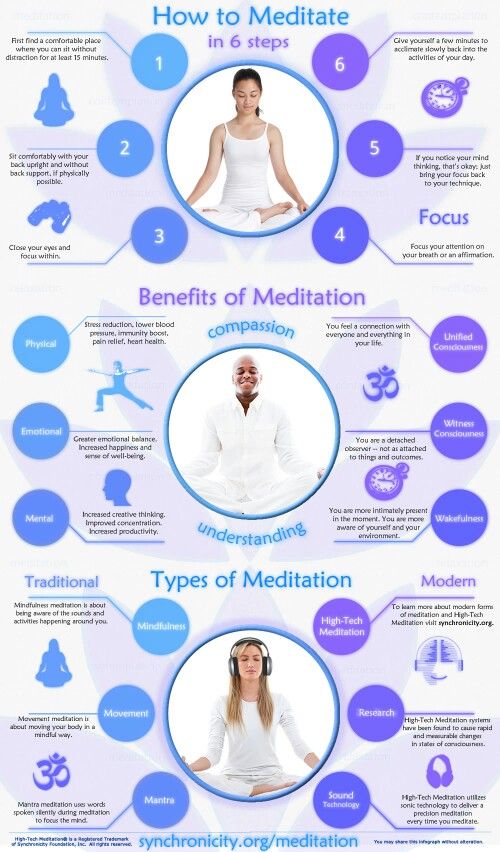
Text: Xenia Diakova-Tinoku Photo source: Getty Images
New on the site and an abuser"
"My husband is so jealous of me that communication with a classmate has to be kept secret"
Return to great sex: how to overcome fear after a long break - a discussion with psychologists
How to behave on the first date so that it does not become the last: 2 main rules failures”
“Blindness reminds me of the beauty of the world around me”: author of a magazine for deaf-blind people about life, joy and optimism
Why is meditation useful for children?
We all come from childhood. The formation of personality falls on childhood and adolescence. It is at this time that the individuality of a person is formed, his ability to establish contacts and respond to events from the outside world.
Contents:
- 1 How can meditation help develop a healthy personality?
- 2 What does meditation do for children of preschool and school age?
- 3 Principles of correct meditation
- 4 How to conduct a meditation session?
How can meditation help develop a healthy personality?
Many parents dream of raising a balanced child who will clearly understand what he wants and how he can achieve it.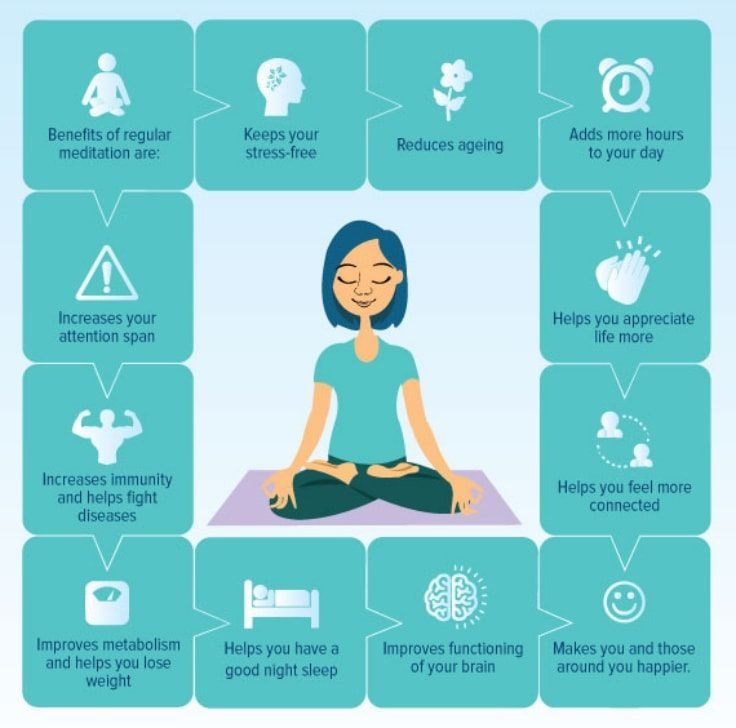 Yes, each case is individual, but meditation can help in this difficult matter.
Yes, each case is individual, but meditation can help in this difficult matter.
A modern child often experiences an excess of energy, he may have difficulties with peers and difficulties in communication. All this can negatively affect self-esteem. Add to this the age-related difficulties with concentration and the pressure of school, and you will see how difficult it is for a small person.
Under the yoke of these factors, children may encounter psychological problems. Meditation is not able to heal difficult mental problems, but it can help solve the emotional problems of a child.
What does meditation do for children of preschool and school age?
- Perseverance develops
- Improves memory and attention
- Reduces stress levels
- Improve relationships with others
- Social skills and empathy develop
By meditating, a child learns to control his body and emotions.
Principles of Right Meditation
- Turn Practice into Play
- Turn on your imagination
- Don't make the lessons too long.
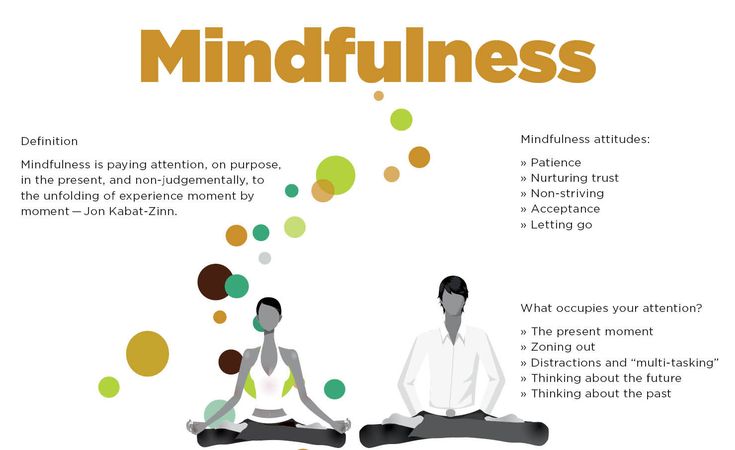 The child does not have the patience to sit quietly in one place even for 20 minutes. Measure the time for meditation, according to the age of the child and increase it by 1 minute. For example, if the baby is 7 years old, then the session should last no more than 8 minutes.
The child does not have the patience to sit quietly in one place even for 20 minutes. Measure the time for meditation, according to the age of the child and increase it by 1 minute. For example, if the baby is 7 years old, then the session should last no more than 8 minutes. - Exercise with your child. Children tend to imitate their parents - be an example to him!
- Don't expect an effect right away. The real benefits of meditation sessions may not come soon. It is impossible, having meditated at night for only a couple of weeks, to make a real genius out of a child. But practice will give the child the necessary tools to understand himself and his emotions, and in the future to regulate them.
How to conduct a meditation session?
We will give recommendations for practice with sounds. It is considered the most effective, and, perhaps, will be the most interesting for the child.
Everything that is described in this practice must be done not only by the child, but also by you.